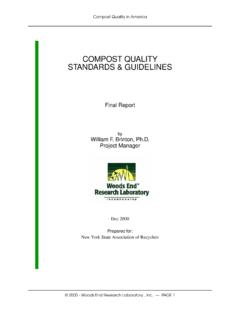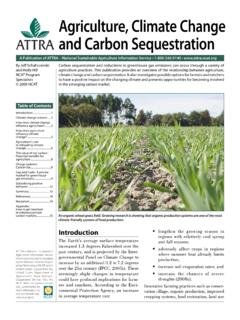Transcription of Pearson Edexcel International GCSE Biology
1 Write your name here Surname Other names Centre Number Candidate Number Pearson Edexcel International GCSE. Biology Unit: 4BI0. Science (Double Award) 4SC0. Paper: 1BR. Monday 19 May 2014 Afternoon Paper Reference 4BI0/1BR. Time: 2 hours 4SC0/1BR. You must have: Total Marks Ruler Calculator Instructions t Use black ink or ball-point pen. t Fill in the boxes at the top of this page with your name, centre number and candidate number. t Answer all questions. t Answer the questions in the spaces provided there may be more space than you need. t Show all the steps in any calculations and state the units. Information t The total mark for this paper is 120. t The marks for each question are shown in brackets use this as a guide as to how much time to spend on each question.
2 Advice t Read each question carefully before you start to answer it. t Keep an eye on the time. t Write your answers neatly and in good English. t Try to answer every question. t your answers if you have time at the end. Check Turn over P43532A. 2014 Pearson Education Ltd. *P43532A0128*. 1/1/1/1/1/. Answer ALL questions. 1 Plants need water to survive. (a) Name the two parts of a plant cell where most water is found. (2). 1 .. 2 .. (b) Plants absorb water from the soil through their roots. (i) In the space draw a labelled diagram of a root hair cell. (4). (ii) Explain how the structure of the root hair cell is adapted to absorb water from the soil. (2).. 2. *P43532A0228*. (c) Plants also absorb mineral ions from the soil. (i) What are magnesium ions used for in plants?
3 (1).. (ii) What are nitrate ions used for in plants? (2).. (Total for Question 1 = 11 marks). 3. *P43532A0328* Turn over 2 Fish farming provides protein for humans to eat. (a) A freshwater fish farmer noticed the following problems. Suggest the cause of each problem and a solution for the farmer. (i) An increase in the number of bird predators in the area. (2). cause .. solution .. (ii) An increase in the growth of algae on the surface of the fish ponds. (4). cause .. solution .. 4. *P43532A0428*. (iii) An increase in the number of fish with a disease. (2). cause .. solution .. (b) Suggest two advantages of fish farming compared to catching fish in the wild. (2). 1 .. 2 .. (Total for Question 2 = 10 marks). 5. *P43532A0528* Turn over 3 The diagram shows the human digestive system.
4 A. J. I. B. H G. C. F. D. E. (a) Use letters from the diagram to answer these questions. Each answer may be one letter or more than one letter. (3). (i) Where is amylase made? .. (ii) Where are faeces stored? .. (iii) Where is protein digested? .. 6. *P43532A0628*. (b) Describe and explain how the structure of the small intestine is adapted for absorbing digested food. (5).. 7. *P43532A0728* Turn over (c) A balanced diet is important to maintain good health. (i) Suggest the consequences of having a diet that lacks fresh fruit and fibre. (2).. (ii) Suggest the consequences of having a diet that contains too much fat. (3).. (Total for Question 3 = 13 marks). 8. *P43532A0828*. BLANK PAGE. 9. *P43532A0928* Turn over 4 An experiment is set up to find out if carbon dioxide is needed by plants for photosynthesis.
5 Two plants were destarched and then put in glass containers A and B. as shown in the diagram. After two days in the containers the plant leaves are tested for starch. soda lime (to absorb light light carbon dioxide). A B. potted plant glass potted plant container sodium hydroxide solution clear-plastic bag tied over water (to absorb carbon dioxide) the pot (a) (i) Suggest why the pots were covered with clear-plastic bags. (2).. (ii) What is the purpose of container B? (1).. (iii) The plant species and the time were kept the same in the experiment. Suggest two other variables that should be kept the same for the experiment to be valid. (2). 1 .. 2 .. 10. *P43532A01028*. (b) The table describes the stages used to test the leaves for starch. It also gives the reason for each stage.
6 (i) Complete the table by describing stage 2 and giving the reason for stage 4. (2). Stage Reason make cell membranes permeable and prevent any starch 1. boil leaf in water digestion 2.. remove chlorophyll .. 3. dip leaf in water hydrate leaf for iodine diffusion .. 4. add iodine solution to leaf .. (ii) Explain how stage 1 will prevent any starch digestion. (1).. (iii) What is meant by the term diffusion mentioned in stage 3? (1).. (iv) Describe the colour of the leaves you would expect after a starch test on (2). a leaf from container A.. a leaf from container B .. (Total for Question 4 = 11 marks). 11. *P43532A01128* Turn over 5 Huntington's disease causes damage to the nervous system. It is an inherited condition caused by a dominant allele (H). Only individuals who are homozygous for the recessive allele (h) are protected from the disease.
7 The diagram shows the inheritance of Huntington's disease in a family. A B C D. E F G H I J K. L M N O. Male Female Male with Female with Huntington's disease Huntington's disease (a) Complete the table to show how many people in the diagram fit each description. The first one has been done for you. (4). Number of people Description who fit the description male 7. female with Huntington's disease homozygous recessive heterozygous homozygous dominant 12. *P43532A01228*. (b) Individuals A and B have both male and female children. Draw a genetic diagram to show how they can produce both male and female children. (3). (Total for Question 5 = 7 marks). 13. *P43532A01328* Turn over 6 Farmers have used selective breeding to produce cows that give high milk yields.
8 (a) Describe how selective breeding can be used to produce cattle that give high milk yields. (3).. (b) The diagram shows a different way to obtain cows that produce high milk yields. The process is called embryo cloning. In this process individual cells from an embryo known to have the potential to become a high milk yielding cow are separated before they become specialised. Each separated cell is then allowed to develop into a new embryo. These new embryos are then put into surrogate mothers. cells separated before they become specialised new embryos put into surrogate mothers 14. *P43532A01428*. (i) Where in the body of the surrogate mothers do the new embryos develop? (1).. (ii) Suggest three advantages of producing cows with desirable characteristics using embryo cloning rather than using selective breeding.
9 (3). 1 .. 2 .. 3 .. (c) Explain what is meant by the term clone. (2).. (d) Name the type of cell division that produces an embryo from an individual cell. (1).. (Total for Question 6 = 10 marks). 15. *P43532A01528* Turn over 7 The diagram shows the carbon cycle. The letters A to F represent different processes in the carbon cycle. carbon dioxide in the atmosphere C. B. C. carbon organic carbon compounds F. in fossil C D compounds in dead organic fuels in animals matter E F. A. organic compounds in green plants (a) Complete the table by naming the process represented by each letter. The first one has been done for you. (5). Letter Name of process A fossilisation B. C. D. E. F. 16. *P43532A01628*. (b) (i) Some of the carbon in plants is found in the form of carbohydrates.
10 Name two carbohydrates found in plants. (2). 1 .. 2 .. (ii) The molecule that genes are made from contains carbon. Name this molecule. (1).. (c) Describe how increasing levels of carbon dioxide in the air may cause global warming and explain the possible consequences of global warming. (5).. (Total for Question 7 = 13 marks). 17. *P43532A01728* Turn over 8 (a) The table shows some of the levels of organisation within an organism. Complete the table by inserting a tick (9) to show the level of organisation of each example. The first one has been done for you. (4). Level of organisation Example Organelle Organ System nucleus 9. circulation chloroplast leaf bulb (b) Place the following human structures in order of size from the smallest to the largest. liver red blood cell eye white blood cell kidney (2).













